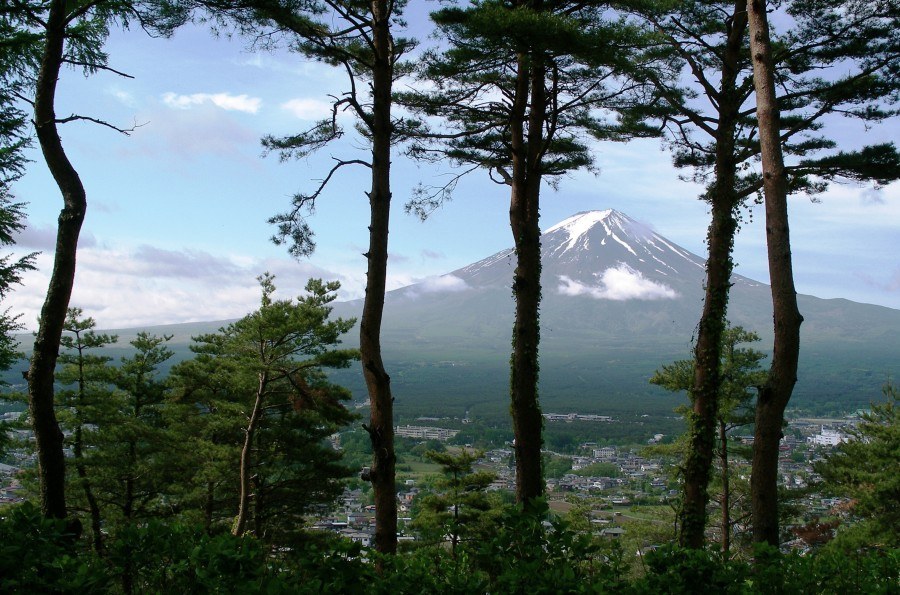Like this post? Help us by sharing it!
Blog post written by Steve Parker (InsideJapan Tours tour leader)
The images beamed across the globe in recent weeks have been indeed deeply distressing – not least for those of us who have spent a number of years in this great country. However, Japan is a country whose people have bounced back from times of immense adversity on many occasions – this time will be no exception – the people are already pulling together in a huge effort to get back on track.
When the unprecedented temblor hit the northeast of Japan, I was with a group, touring Kyoto city on foot. I actually had no idea of the incident as I was running errands during lunchtime. When one of my travellers asked, “was that an earthquake earlier?” I replied that she may have felt the rumbling of a bullet train as it whizzed out of Kyoto station. Of course, she had been correct but in being so far away, we had no idea of the devastation that would be wrought upon the Tohoku region, over 500miles away.
Within no time that evening, I was receiving calls and emails from back home – of concern for my safety and then urging me to leave Japan. Having also been able to access the media from the UK, I knew that geographical awareness of the badly affected area would be hazy to folks back home. Thankfully for my group and I, Kyoto was a world away from the situation in the north. Everyday people continued with their everyday errands and were no doubt many oblivious to the events until switching on their TVs after returning home.
As a group, we discussed things after understanding more of the events in the north and that we were far away from danger. People wanted to continue as usual, which we did: geisha-spotting in the quaint backstreets of Gion; stopping to say a prayer for those in need at Kinkakuji Temple – home to the magnificent Golden Pavillon; and exploring the fascinating food markets – sampling the weird and wonderful. I was really happy that people could still experience the Japan they had dreamt and read about.
Only when we arrived in Tokyo could I sense a slight difference that was undetectable to the fresh-faced tourist – the brash neon was less in-your-face, shops were open for reduced hours, the stations less busy with commuters. However, in such an energised metropolis, the newcomer would never be able to tell, all things being relative. A half-asleep Tokyo would seem more than lively to most!
So far, areas I have visited since the quake, such as Kyoto and Nagoya, really have seemed unaffected on a day-to-day basis, though of course hearts are heavy in sympathy for the people of the north. Tokyo, although rocked, received very minimal damage – a testimony to its anti-earthquake structures. Trains are slightly running reduced services that still put the UK’s public transport to shame, and although no oft-superfluous escalators and fewer mega efficient ticket vending machines are in use – to save energy – this poses no major problem to Tokyo’s commuters. Enforced blackouts at designated times for designated areas are further helping to conserve valuable energy. These are inconveniences that the locals are dealing with as inconveniences and nothing more, and they seem to be going about their business as usual. The broader picture in mind, people are simply dealing with new circumstances and exercising more awareness of what they consume, whilst life continues.
Reported panic shopping has seen stocks of milk, bread, bottled water, cup noodles and batteries plundered by worried Tokyoites – hardly leaving supermarkets bear though! Some even fled temporarily to the west for fear of further large quakes, taking bullet trains to the Kansai region, home to the cities Osaka, Kyoto and Kobe. But these numbered a relative few and a week on most have since returned, the initial shock and panic of the quake over.
The biggest earthquake and tsunami in Japanese history will leave an indelible mark on the people but moreover it will bring out their fantastic sense of awareness of and consideration for others, cooperation, loyalty, generosity and determination – qualities which always strike all of the groups I lead in Japan.
Spring is on the horizon – Mt Fuji looks majestic in her snowy cape, the plum blossoms are out in many areas and the wonderful cherry blossoms are coming soon – Japan has so much to offer people, even in times of difficulty. Foreigners coming to see the country in the glorious springtime are surely in for the same treats as always and can feel good in themselves by supporting the country’s recovery. Their visit will make the local people very happy, ensuring that eternally friendly Japanese welcome.
Please support the InsideJapan Tsunami Relief fund which is raising money for a Japanese charity called Civic Force – http://www.justgiving.com/InsideJapan




